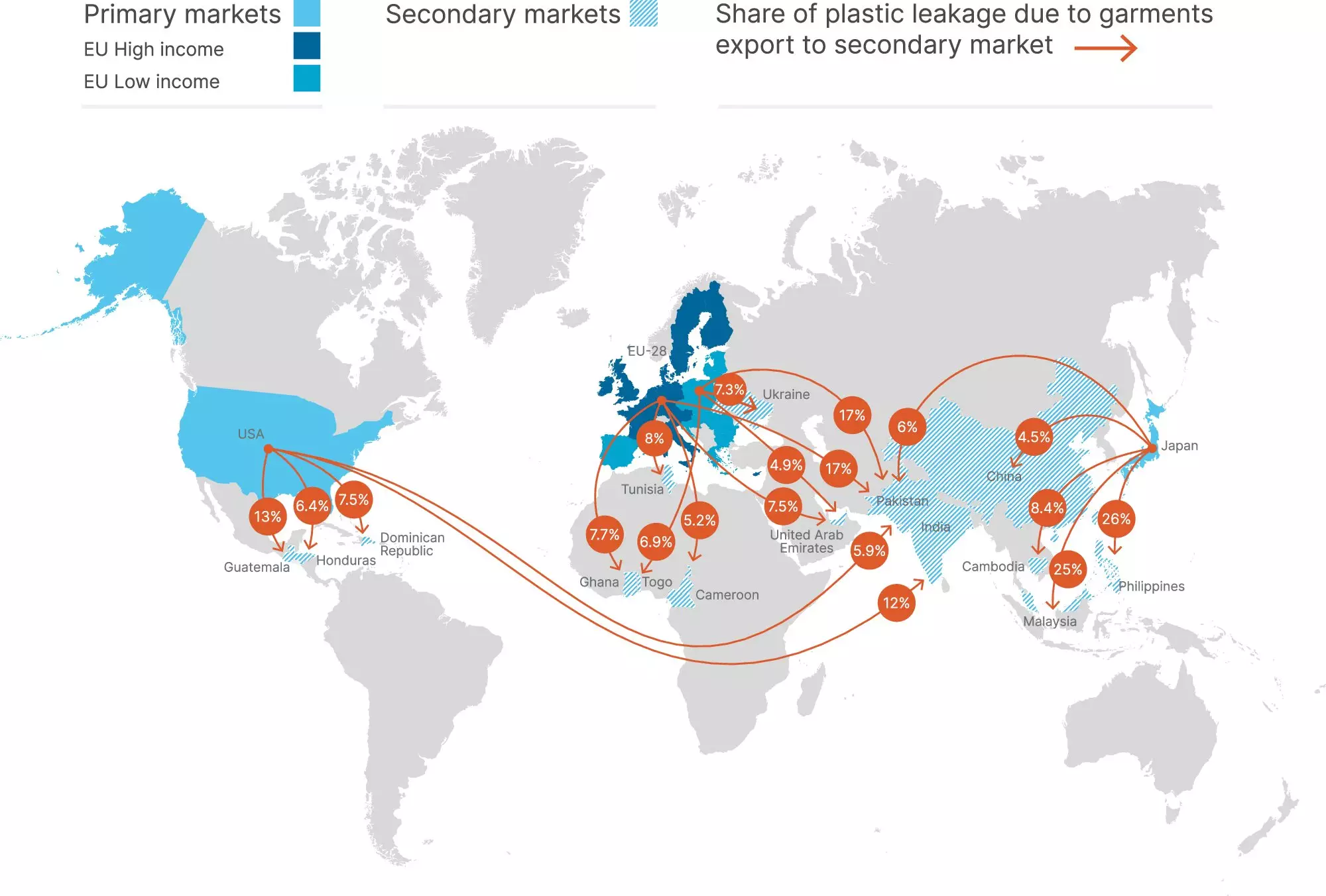A recent study conducted by researchers at North Carolina State University has shed light on the detrimental effects of the global apparel industry on the environment. The study revealed that in 2019 alone, over 20 million tons of plastic waste were generated as a result of global apparel consumption. This plastic waste, if improperly managed, can lead to environmental pollution, a phenomenon known as “plastic leakage.”
The study identified two primary sources of textile waste within the apparel industry: clothing made from synthetic materials such as polyester, nylon, and acrylic, and clothing made from natural fibers like cotton. Researchers delved into the entire product lifecycle, examining not only the apparel itself but also the plastics used in packaging and transportation. This comprehensive approach allowed them to estimate the amount of plastic waste that enters the environment at each stage of the apparel value chain.
Synthetic apparel emerged as the predominant source of plastic waste, accounting for a staggering 89% of the total plastic waste generated by the global apparel industry in 2019. Of the 18 million tons of waste produced by the synthetic value chain, an estimated 8.3 million tons were believed to have leaked into the environment. This highlights the urgent need to address the environmental repercussions of synthetic clothing production and disposal.
The study also revealed concerning trends related to consumer behavior in high-income countries like the United States and Japan. In these regions, a “fast fashion” culture prevails, characterized by the frequent purchase of clothing items that are often discarded after minimal use. This disposal process contributes to the global plastic waste crisis, particularly when discarded clothing finds its way to thrift stores and secondary markets in lower-income countries with inadequate waste management systems.
To mitigate the environmental impact of the apparel industry, the study calls for significant reforms to transition towards a circular framework. This framework emphasizes recycling materials and minimizing waste generation, thereby reducing the reliance on synthetic textiles. By promoting the use of renewable and non-synthetic fibers, the industry can move towards a more sustainable and environmentally conscious approach to apparel production.
The findings of the study underscore the pressing need for action to address the environmental consequences of global apparel consumption. As plastic waste continues to accumulate and pollute the environment, stakeholders in the apparel industry must prioritize sustainability and adopt practices that prioritize recycling and waste reduction. By working towards a circular framework and embracing renewable materials, the apparel sector can play a pivotal role in mitigating the harmful effects of plastic leakage on our planet.


Leave a Reply